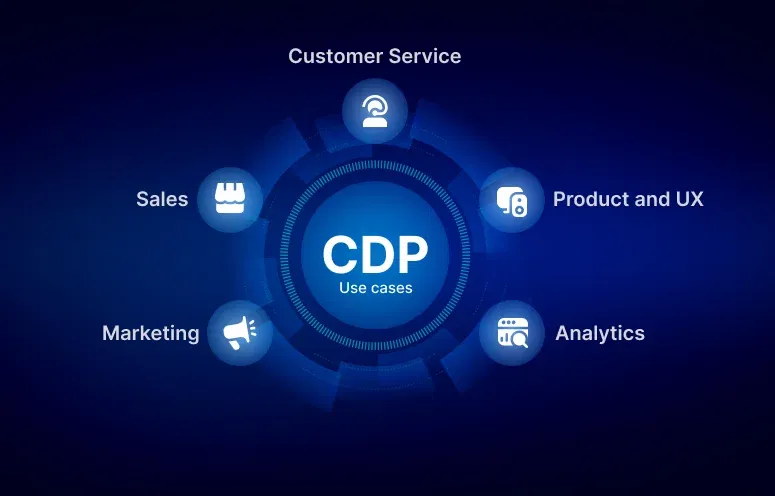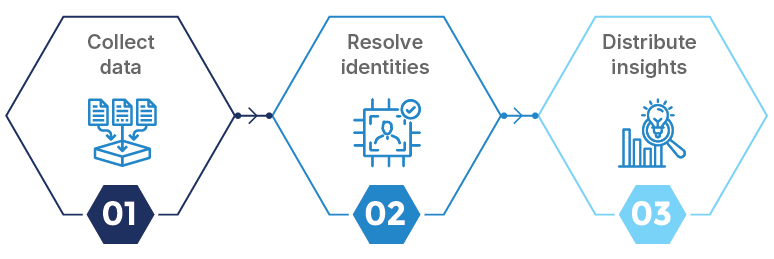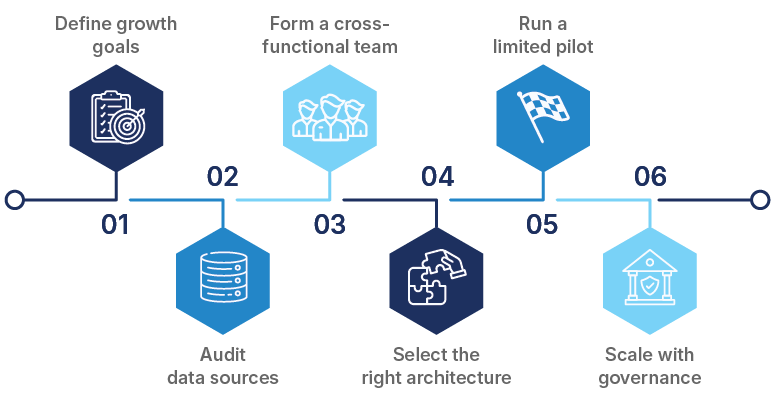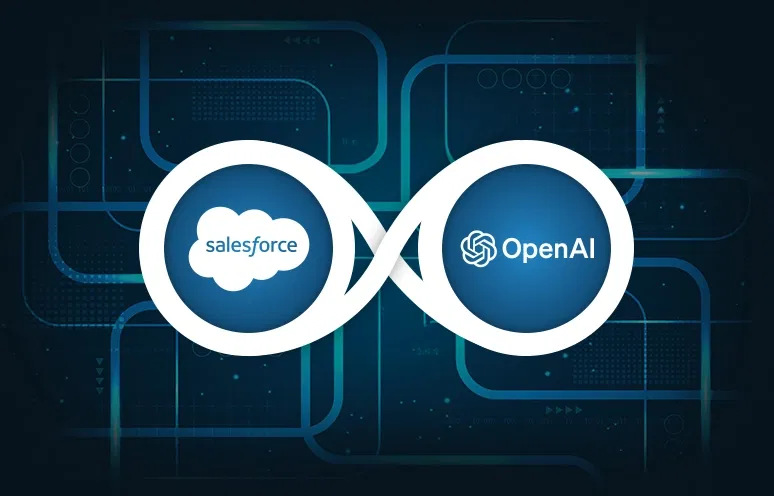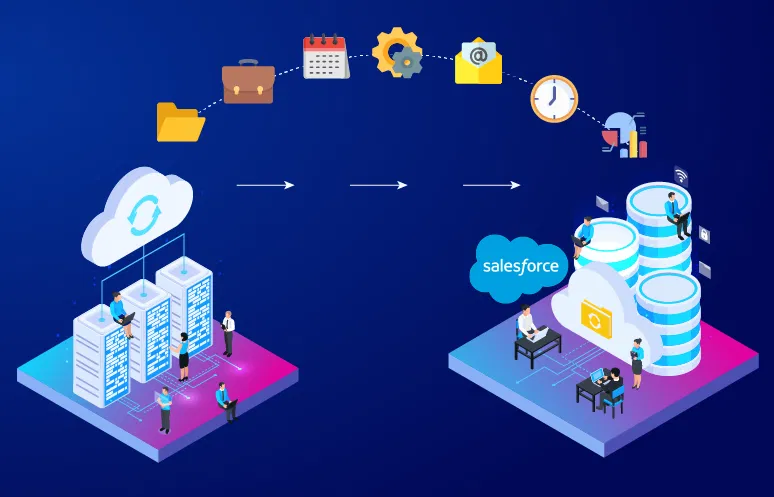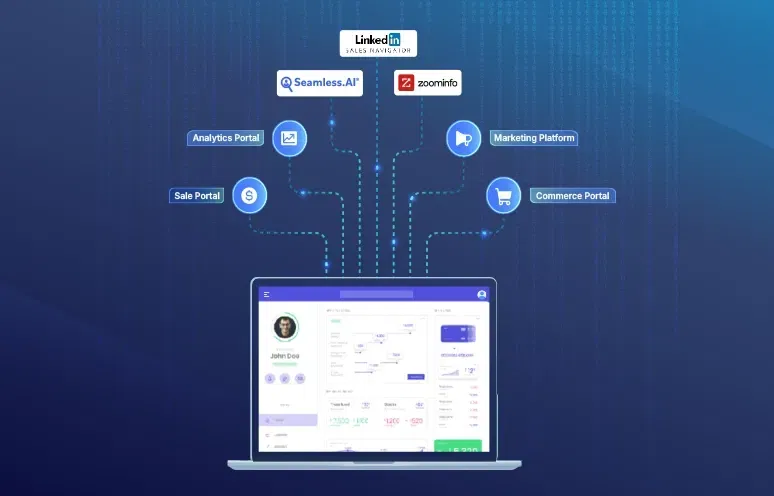Every perfect customer interaction starts with clear alignment between a buyer’s need and the solution in front of them, without wasting effort on unfocused marketing. That is the promise of a Customer Data Platform (CDP). It ensures every potential match between business offerings and customer needs is unmistakable and accessible. It also brings together every data source, including online behavior, purchase history and support tickets, into one unified view for timely, personalized engagement.
Here’s an interesting stat:
More than half of marketers report payback on their CDP investment within six months, and four out of five see positive ROI within a year. – CDP.com
That level of rapid return shows how a unified customer view can transform budget decisions and campaign effectiveness. With clear evidence that CDPs deliver rapid payback, it is not if you adopt one, but when you begin to capture its benefits. In this blog post, you’ll learn what a customer data platform is, see high-impact use cases across marketing, sales, service, product and data-ops, and discover how to get started with a CDP in your business.
What is a customer data platform?
A customer data platform is a marketer-managed system that collects data from every customer touchpoint, including web, mobile, CRM, support and more, and combines it into a single, persistent profile. It cleans the raw information, removes duplicate entries and merges separate records so teams can create accurate segments, deliver timely personalization, and track results at every step. CDP use cases span from highly targeted campaign messages to automated retention efforts.
Consolidating browsing history, purchase records, email interactions and support tickets creates a single, clear profile for every customer. That complete view then feeds directly into marketing automation tools, sales dashboards, and help desk applications. Your operations teams can draw on those insights to tailor communications that resonate, prioritize leads based on genuine engagement and collaborate efficiently.
How does a CDP work?
A customer data platform simplifies three essential processes: data collection, identity resolution and activation, so your customer profiles stay current and immediately useful. Automating these steps reduces manual work and allows your team to focus on crafting effective campaigns and strategies.
-
Collect data
Your CDP connects to every source where customer activity lives, including website visits, mobile app events, CRM records, email responses and offline interactions. Data flows in continuously, capturing clicks, form submissions, support tickets and more.
-
Resolve identities
Once data arrives, the platform standardizes formats, removes duplicates and links related records across devices and channels. AI-driven matching uses attributes like email addresses, user IDs and device fingerprints to build one comprehensive profile per customer.
-
Distribute insights
Updated profiles and audience segments flow directly into your marketing automation, sales dashboards and customer service tools. Teams like yours use this real-time intelligence to deliver tailored messages, rank leads by actual engagement and coordinate outreach without data gaps.
CDP use cases by business function
A CDP reveals high-impact opportunities in every area by unifying scattered data into actionable insights. The customer data platform use cases that follow show how unified data turns strategy into measurable impact.
Marketing use cases
The following CDP use cases for marketing show how unified profiles turn interest into revenue. Predictive segmentation and AI-driven channel selection focus budget on the audiences most likely to convert.
-
Hyper-personalized omnichannel campaigns
By unifying data from email, mobile, web and in-store interactions into a single customer profile, brands can serve tailored messages, product recommendations, special offers or reminders at exactly the right moment. Sephora, for example, links its Beauty Insider program across channels so a customer’s in-store purchase triggers a personalized email suggesting complementary products. The result: brands that excel at omnichannel personalization report up to a 15 percent increase in revenue and 89 percent higher retention.
-
Predictive audience segmentation with AI
AI driven CDPs analyze past behavior including browsing history, purchase frequency and engagement signals to forecast which prospects are most likely to buy or churn illustrating one of the advanced CDP use cases that go beyond basic segmentation. MoneySmart, a financial services platform, used Tealium’s CDP to identify high intent audiences, cutting cost per acquisition by 40 percent and lifting conversion rates for targeted offers by 25 percent.
-
Abandoned cart and product-view retargeting
A CDP tracks visitors who leave items in their carts or browse products without purchasing, then sends timely reminders highlighting those exact items. Retailers using this approach recover over 10 percent of otherwise lost revenue on average. Automated workflows from platforms like Omnisend report a 42 percent click to purchase rate, making retargeting one of the highest ROI tactics in ecommerce.
-
Consent-based personalization
By recording each individual’s privacy preferences and enforcing them across every campaign, CDPs enable brands to deliver relevant experiences while staying fully compliant with GDPR and CCPA. Brands that invite customers to opt in and clearly explain data use often spend less to win new buyers and see satisfaction rise, because people trust how their information is handled.
Together, these CDP use cases examples prove how quickly targeted initiatives can pay off.
Sales use cases
Sales teams convert unified data into clear buying signals. Immediate engagement updates inside the CRM highlight active prospects and shorten the sales cycle.
-
High-intent lead identification
A CDP streams web visits, product trials and email engagement into the CRM, flagging prospects that show purchase signals such as pricing-page views or repeated log-ins. Autodesk connected web, trial and email data to its CDP, then pushed real-time intent scores into Salesforce. The change lifted qualified opportunities by 22 percent within one quarter.
-
Dynamic lead scoring
Machine-learning models in the CDP update lead scores whenever a prospect views pricing, downloads a white paper or joins a webinar. HubSpot, after feeding these live scores into its CRM workflow, saw marketing-qualified leads move to sales 30 percent more often and handoff times drop by nearly half.
-
Personalized B2B outreach
Account-based sellers use firmographic data, intent indicators and recent activity from the CDP to craft messages for each buying group. Snowflake reports that this data-driven outreach increased email reply rates by 41 percent and generated 27 percent more meetings for each representative.
-
Cross-sell and upsell mapping
A CDP tracks product usage and renewal dates to spot expansion signals, such as a team exceeding seat limits. Slack provides these insights to customer-success managers, contributing to a 26 percent increase in expansion revenue among accounts targeted with upgrade campaigns.
Customer service and success use cases
Combining service history with live usage data routes each query to the right specialist and flags early signs of churn for timely follow-up.
-
Intelligent support routing
A CDP compares each new ticket with purchase history, preferred channel and past solutions, then assigns it to the agent most suited to help, a clear example of AI powered CDP use cases improving service speed. Fashion retailer ASOS used CDP-based routing to cut average handling time by 12 percent while keeping its customer-satisfaction score above 90 percent.
-
Proactive customer retention campaigns
Churn-risk models in the CDP flag accounts showing declining usage or negative feedback. Success teams automatically send targeted offers, training, or check-in calls before the customer leaves. Mobile carriers find that when a CDP spots falling usage and prompts a timely, personalized offer, customers renew their confidence in the brand and remain loyal rather than looking elsewhere.
-
Unified customer view for agents
A single on-screen view showing recent orders, open cases and campaign history lets agents resolve questions on the first call, with no need to toggle between systems. Firms that adopted this single-pane view report first contact resolution improving by almost twenty percent, which lifted their net promoter score.
Product and UX use cases
In-app personalization adapts feature prompts based on user behavior, driving higher adoption. Usage insights power targeted nudges that improve trial conversion and encourage power-user growth.
-
Behavioral personalization
The CDP records clicks, searches and session depth, then uses feature flags to show layouts and content that match each user’s habits. Spotify’s personalized start screen, powered by these signals, lifted listening time by close to twelve percent.
-
Feature adoption prompts
When the data shows a user has ignored a key capability, the CDP triggers a prompt or tooltip exactly where it helps most. Product teams that nudge users based on live behavior routinely see meaningful gains in new-feature uptake.
-
Trial-conversion optimization
Freemium products track early actions to predict purchase likelihood. High-intent users see premium highlights, while uncertain users get extra guidance. Notion attributes a fifteen percent jump in free-to-paid conversions to this tailored flow.
Analytics, IT and data-ops use cases
Technical teams rely on a CDP to pull event data, customer profiles and compliance rules into one workspace. The platform then supplies clean, governed data to both analytics and operational tools the moment it lands.
-
Identity resolution across devices
A CDP connects user activity by pairing certain identifiers, such as an email address or account ID, with inferred signals like device type, location pattern or browsing path. Mixing these deterministic and probabilistic clues lets the system merge a person’s mobile sessions, desktop visits and other touchpoints into one accurate profile.
-
Data governance and compliance automation
Built-in governance features track data lineage, record consent status and produce audit-ready logs automatically. IT teams configure retention policies and field-level controls once, and the CDP enforces them everywhere, reducing manual checks and speeding compliance with GDPR, CCPA and internal security standards.
-
Real-time data sync with ad platforms
As third-party cookies phase out, a CDP delivers updated first-party segments directly to ad platforms via cookieless identifiers and server-to-server APIs. Marketers maintain precise audience targeting on Google Ads, Facebook and programmatic exchanges without relying on browser cookies.
-
Centralized first-party data activation
With profiles cleaned and unified, a CDP pushes audiences into Salesforce Commerce Cloud storefronts for dynamic product recommendations, personalized promotions and tailored catalogs. Brands using this CDP-to-Salesforce Commerce Cloud workflow launch new campaigns faster and see steady gains in onsite conversion.
How to get started with a CDP in your business
Implementing a CDP works best when it is treated as a business initiative rather than a software install. The checklist that follows breaks the process into clear, ordered steps, turning high-level objectives into tasks that teams can complete and measure.
| Step | What to do | Outcome |
|---|---|---|
| 1 | Define growth goals such as higher retention or reduced acquisition cost, and assign target metrics | Shared success criteria |
| 2 | Audit data sources across web, mobile, CRM, service and offline systems; note gaps and data-quality issues | Complete source inventory |
| 3 | Form a cross-functional team that includes marketing, sales, service, IT and compliance | Clear ownership and faster decisions |
| 4 | Select the right architecture by mapping use cases to vendor features, total cost and integration effort | Technology fit and budget control |
| 5 | Run a limited pilot with one or two priority use cases, then track impact against step-one metrics | Proof of value and quick wins |
| 6 | Scale with governance by adding channels, automating quality checks and documenting consent policies | Sustainable, compliant expansion |
Working through each stage in sequence replaces scattered records with a single, reliable customer view in a matter of months. If you would like a partner that has completed this journey before, our Salesforce Data Cloud consulting team can guide the rollout and keep momentum high.
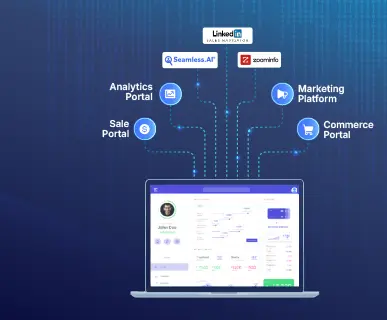
Make every customer insight count
We have learned how a CDP sharpens campaigns, speeds sales cycles and protects recurring revenue. With your goals already defined, the next step is to secure a clear blueprint: map data sources, confirm success metrics, and outline a phased rollout that shows value early while keeping long-term scalability in view. A clear, phased plan turns CDP adoption from an IT project into a business growth initiative.
At Softweb Solutions we start by listening to your goals, then design an architecture that aligns data quality, privacy and activation needs from day one. Our Salesforce Data Cloud specialists prototype quickly, validate impact against agreed metrics and prepare your team to run the platform with confidence. Let’s connect and unlock your data’s full potential.
FAQs
1. What exactly is a Customer Data Platform (CDP)?
A CDP is software that gathers data from every customer touchpoint, cleans and matches the records, then creates a single profile that other systems can use. Marketing uses those profiles for personalized offers, while service teams rely on them for faster case resolution.
2. How does a CDP or Data Cloud differ from a traditional CRM?
A CRM stores sales and service interactions that staff enter manually. A CDP goes further by ingesting raw behavioral data such as page views and mobile events, linking it to CRM records and feeding that unified view to marketing, analytics and product tools.
3. What types of data can a CDP ingest?
Most platforms handle structured data from CRM and order systems, semi-structured data like web events and email logs, and unstructured data such as support notes. Some also import offline transactions, giving retailers a full picture of the store and digital activity in one place.
4. Can a CDP integrate easily with other marketing tools and platforms?
Yes. Leading CDPs offer pre-built connectors for email, advertising, analytics and personalization tools. For example, a retailer can push AI-based “next best offer” segments from the CDP straight into Google Ads and Meta campaigns in near real time.
5. How does a CDP support privacy, compliance, and governance?
Consent settings, data retention rules, and audit trails are built into the platform. When a user opts out of tracking, the CDP removes their data from downstream systems and logs the action for GDPR or CCPA audits, keeping marketing compliant without extra scripts.
6. Which teams benefit most from a CDP?
Every customer-facing or data-owning team gains value from a CDP. Marketing teams tap richer segments for personalized campaigns, sales function receives real-time buying cues, service agents view full histories for faster resolutions, and product managers analyze usage trends to improve features. Data and compliance teams rely on a single, governed source instead of scattered files.
